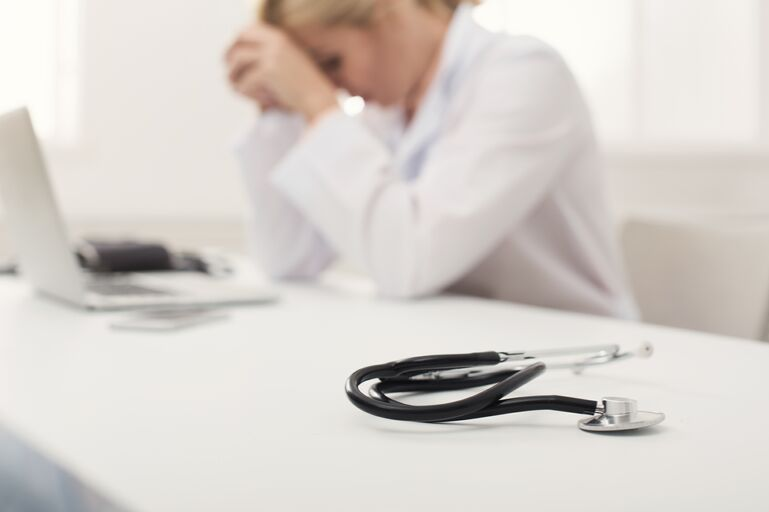Wendy Dean & Elisabeth Rosenthal
The New York Times
Orignally posted 15 July 23
Here is an excerpt:
Some doctors acknowledged that the pressures of the system had occasionally led them to betray the oaths they took to their patients. Among the physicians I spoke to about this, a 45-year-old critical-care specialist named Keith Corl stood out. Raised in a working-class town in upstate New York, Corl was an idealist who quit a lucrative job in finance in his early 20s because he wanted to do something that would benefit people. During medical school, he felt inspired watching doctors in the E.R. and I.C.U. stretch themselves to the breaking point to treat whoever happened to pass through the doors on a given night. “I want to do that,” he decided instantly. And he did, spending nearly two decades working long shifts as an emergency physician in an array of hospitals, in cities from Providence to Las Vegas to Sacramento, where he now lives. Like many E.R. physicians, Corl viewed his job as a calling. But over time, his idealism gave way to disillusionment, as he struggled to provide patients with the type of care he’d been trained to deliver. “Every day, you deal with somebody who couldn’t get some test or some treatment they needed because they didn’t have insurance,” he said. “Every day, you’re reminded how savage the system is.”
Corl was particularly haunted by something that happened in his late 30s, when he was working in the emergency room of a hospital in Pawtucket, R.I. It was a frigid winter night, so cold you could see your breath. The hospital was busy. When Corl arrived for his shift, all of the facility’s E.R. beds were filled. Corl was especially concerned about an elderly woman with pneumonia who he feared might be slipping into sepsis, an extreme, potentially fatal immune response to infection. As Corl was monitoring her, a call came in from an ambulance, informing the E.R. staff that another patient would soon be arriving, a woman with severe mental health problems. The patient was familiar to Corl — she was a frequent presence in the emergency room. He knew that she had bipolar disorder. He also knew that she could be a handful. On a previous visit to the hospital, she detached the bed rails on her stretcher and fell to the floor, injuring a nurse.
In a hospital that was adequately staffed, managing such a situation while keeping tabs on all the other patients might not have been a problem. But Corl was the sole doctor in the emergency room that night; he understood this to be in part a result of cost-cutting measures (the hospital has since closed). After the ambulance arrived, he and a nurse began talking with the incoming patient to gauge whether she was suicidal. They determined she was not. But she was combative, arguing with the nurse in an increasingly aggressive tone. As the argument grew more heated, Corl began to fear that if he and the nurse focused too much of their attention on her, other patients would suffer needlessly and that the woman at risk of septic shock might die.
Corl decided he could not let that happen. Exchanging glances, he and the nurse unplugged the patient from the monitor, wheeled her stretcher down the hall, and pushed it out of the hospital. The blast of cold air when the door swung open caused Corl to shudder. A nurse called the police to come pick the patient up. (It turned out that she had an outstanding warrant and was arrested.) Later, after he returned to the E.R., Corl could not stop thinking about what he’d done, imagining how the medical-school version of himself would have judged his conduct. “He would have been horrified.”
Summary: The article explores the moral distress that many doctors are experiencing in the United States healthcare system. Doctors are feeling increasingly pressured to make decisions based on financial considerations rather than what is best for their patients. This is leading to a number of problems, including:
- Decreased quality of care: Doctors are being forced to cut corners on care, which is leading to worse outcomes for patients.
- Increased burnout: Doctors are feeling increasingly stressed and burned out, which is making it difficult for them to provide quality care.
- Loss of moral compass: Doctors are feeling like they are losing their moral compass, as they are being forced to make decisions that they know are not in the best interests of their patients.
The article concludes by calling for a number of reforms to the healthcare system, including:
- Paying doctors based on quality of care, not volume of services: This would incentivize doctors to provide the best possible care, rather than just the most profitable care.
- Giving doctors more control over their practice:This would allow doctors to make decisions based on what is best for their patients, rather than what is best for their employers.
- Supporting doctors' mental health: Doctors need to be supported through the challenges of providing care in the current healthcare system.



